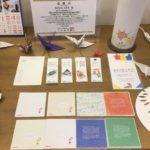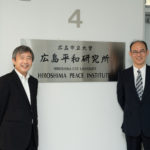The Significance of the Hiroshima Peace Notebook’s Revision
~Fostering the Ability to Continue and Spread the Hiroshima Spirit~
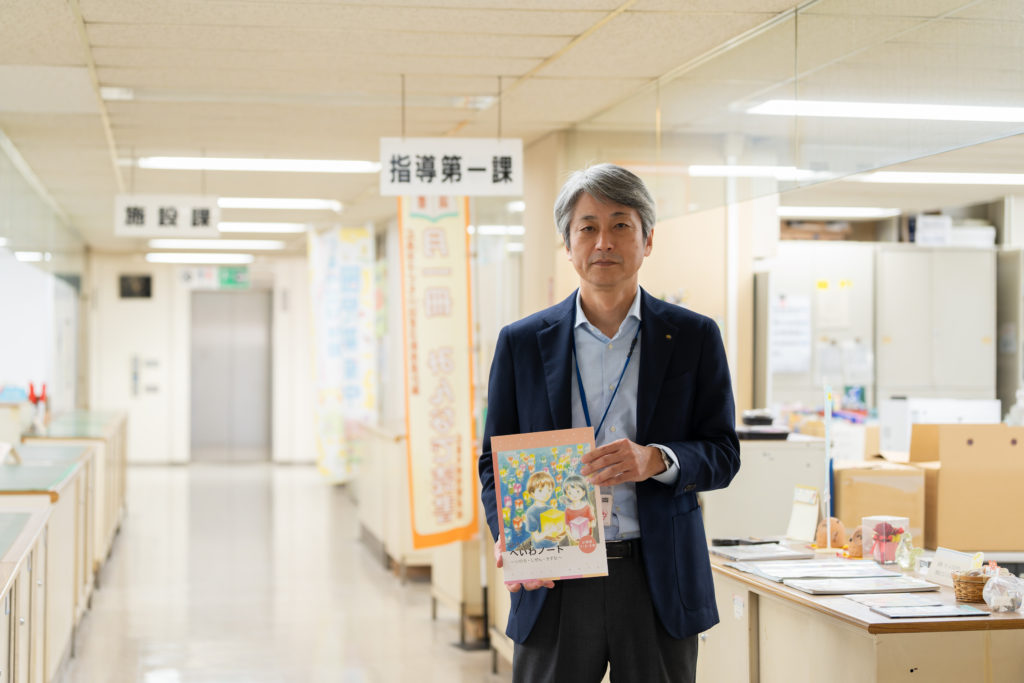
The Hiroshima Peace Notebook is a teaching material used in municipal elementary, junior high, and senior high schools as part of the Hiroshima City’s Peace Education Program. It was revised in March 2023, completely renewing approximately 70% of its contents.
Let us hear more about the events that led to the implementation of the Hiroshima Peace Notebook as well as the details and purpose of its revision from Takata Hisashi, Director of the First Guidance Division, School Education Department, Hiroshima City Board of Education.
Since 1970, the City of Hiroshima has provided peace education tailored to the actual conditions of each school. It uses the atomic bombing as a core concept to help students understand the value of life and the dignity of every person, nurturing their motivation and mindset of contributing to the realization of lasting world peace as members of the International PeaceCulture City.
However, the 2010 Survey on Peace Awareness shows that only 33% of elementary school students, 56% of junior high school students, and 66% of senior high school students could name the year and dates of the atomic bombing. These results highlight a declining trend in the students’ knowledge of the atomic bombing as well as their awareness and motivation to preserve the memory of the atomic bombing for future generations.
Hiroshima City began revising its peace education in hopes of reminding young people how tragic the atomic bombing were. The city formulated an integrated program for municipal elementary, junior high, and senior high schools in Hiroshima City, with goals and content tailored to the developmental stages of the children and students. The Hiroshima Peace Notebook is one of the teaching materials utilized by this program. The notebook has four volumes: lower elementary school, upper elementary school, junior high school, and senior high school. Each level is designed to be taught in small, three-hour units.
Ten years have passed since the implementation of the Hiroshima Peace Notebook. This year, 2023, marks its turning point, where it underwent a massive revision.
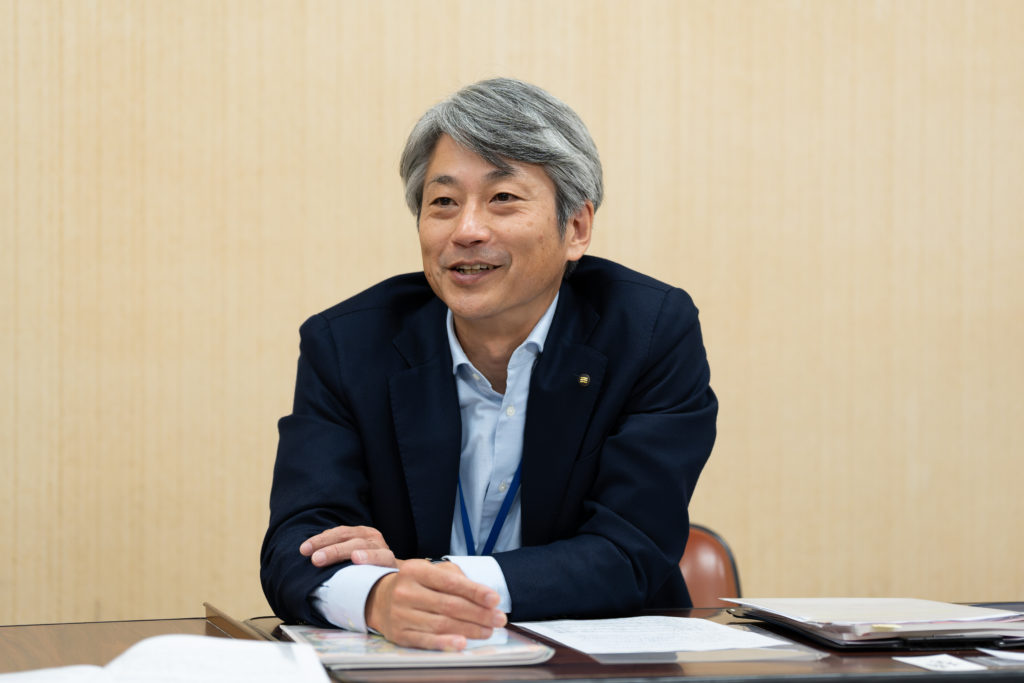
Director Takata talking about the revision of the peace education program and its focus on “succession” and “transmission”
“Many things have changed in the past decade. The atomic bomb survivors are aging, and the world’s situation has changed dramatically. Many different people now visit Hiroshima, including former U.S. President Barack Obama. In response to these changes, we decided that children needed better teaching materials to help them understand the experience and reality of the atomic bombing and ponder and communicate this topic by themselves. Our peace education is centered on the Hiroshima spirit—the atomic bomb survivors’ mindset of not wanting others to experience the tragedy. Now, what kind of teaching materials should we use to nurture the children, the ones who will carry on the thoughts and feelings of the atomic bomb survivors? When should we use these teaching materials to make them learn and think? This revision focused on addressing these challenges.”
The selection of content and goals for each volume revolved around “succession” and “transmission.”
The notebook starts its perspective with concepts close to the student, such as family and the things they cherish. For example, it shows lower elementary school students how their dearest treasures can vanish in an instant due to nuclear warfare. It then gradually transitions to the international community as the student progresses through the volumes. In other words, the content was designed to match the student’s growth, shifting from the reality of the atomic bombing to thinking about reconstruction and world peace. This approach allows the student to take in the lessons as a personal matter. It also incorporates various activities to help students communicate these topics in their own words. Elementary students will make presentations in class and outside the school, while junior high school students and above will create messages for people outside the prefecture and abroad.
“Some schools have students present their thoughts on peace in class, while others invite people from regional areas to their peace rallies, where students express what they’ve learned. For example, some high schools have their students express themselves through plays. The city also has a yearly initiative called ‘Children’s Peace Summit’ that invites sixth-graders to write an essay on peace, present their opinions, and engage in other activities. Its goal is to select two child representatives to present their ‘Pledge for Peace’ at the Peace Memorial Ceremony on August 6th. Another initiative is the ‘Communicating Hiroshima Project,’ where junior high school students deliver a message of peace in English to the ambassadors of various countries and people overseas on August 6th.”
Gone are the days when the war felt close—when one’s parents or grandparents were likely atomic bomb survivors. Atomic bomb survivors in the family are becoming rare. Even though the war is now in the distant past, it is crucial to preserve the spirit of Hiroshima to ensure this tragedy would never repeat itself.
“The thoughts and experiences of the atomic bomb survivors are what is preventing nuclear weapons from being used right now. Although they continue to tell their stories, opportunities to listen to these stories directly from them are becoming rarer as the years go by. I believe it is the role of education to figure out how to pass their experience on.”
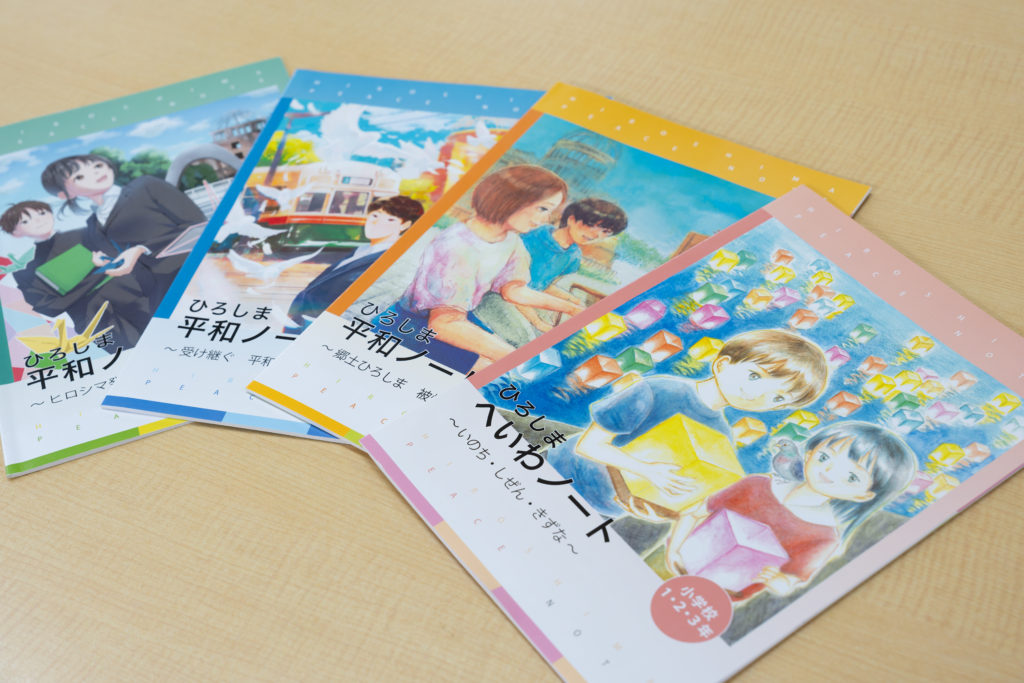
The revised Hiroshima Peace Notebook—tailored to the student’s grade level to make the lessons easier and more personal
Hiroshima City’s peace education continues surely and steadily without interruption while revising its content and methods to match the times. The Hiroshima Peace Notebook, a core component in these endeavors, is available on the City of Hiroshima website.
“It is available to the public so that anyone can use it freely. The Hiroshima Peace Notebook is an opportunity. We designed it as a starting point for initiatives to spread. When we learn about the reality of the atomic bombing and start thinking about it as a personal matter, the mundane things around us start having meaning. Everyone is welcome to use this notebook as teaching material outside the city or prefecture. In fact, we would be happy if it became widespread.”
Children’s Peace Study Promotion Project and the Succession and Transmission of Hiroshima to Future Generations by Elementary, Junior High, and Senior High School Students
https://www.city.hiroshima.lg.jp/site/education/16812.html
Inquiries
First/Second Guidance Division, School Education Department, Hiroshima City Board of Education.
Phone: 082-504-2784 / 082-504-2487 | Fax:082-504-2142
Tags associated with this article




